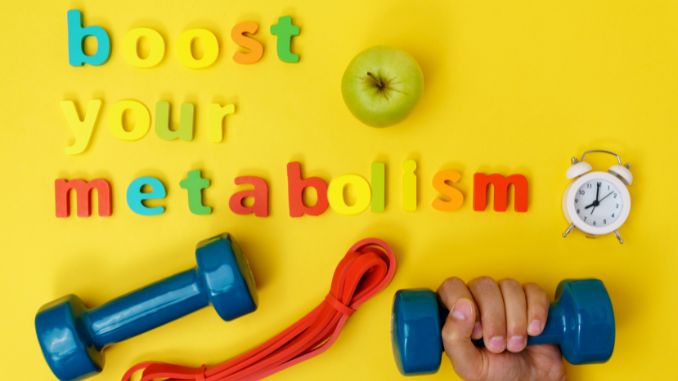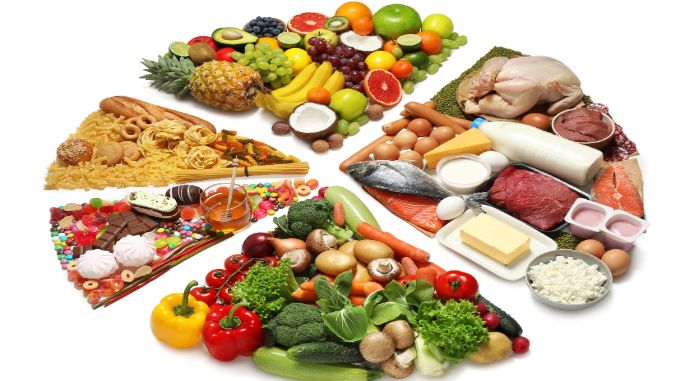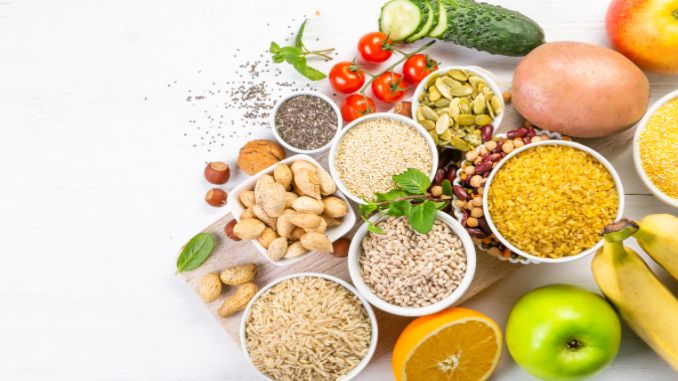In the dynamic realm of nutrition and fitness, one concept has gained significant attention and momentum in recent years – Reverse Dieting. But what exactly is reverse dieting, where did it come from, and why has it become so popular?
Join us as we delve into the fascinating world of reverse dieting, unraveling its definition, exploring its origins, and discovering why it has captured the imagination of health-conscious individuals worldwide. Get ready to embark on a journey that challenges traditional dieting wisdom and offers a fresh perspective on achieving your health and fitness goals with our reverse dieting guide.
Introduction to Reverse Dieting
Reverse Dieting is a dietary approach that entails gradually elevating calorie consumption and adjusting macronutrient ratios after a calorie restriction, aiming to boost metabolic rate, maintain or gain lean muscle mass, and minimize fat regain. It originates in the competitive bodybuilding and fitness communities. It was developed as a recovery method for athletes undergoing extreme calorie deficits during contest preparation.
Reverse Dieting has recently gained popularity beyond this niche, offering a more sustainable weight management approach. Moreover, it has become widely recognized through social media, fitness blogs, and personal success stories, challenging the traditional dieting paradigm and providing individuals with a promising alternative for achieving their fitness goals with the reverse dieting guide.
Understanding the Concept

The Science Behind Reverse Dieting
Reverse dieting is a smart way of eating more food after you’ve been on a diet. When you diet long, your body slows down and gets used to less food. Reverse dieting helps you slowly eat more without gaining weight too quickly. It also helps your body’s hunger and energy systems return to normal. It keeps your muscles strong and helps balance your body’s hormones. However, remember that individuals vary, making it crucial to consult a doctor or nutrition expert to devise a personalized plan. Moreover, in this reverse dieting guide, we’ll explore key steps and considerations for implementing this strategy effectively.
How It Differs From Traditional Dieting
Reverse dieting is different from regular dieting in a few important ways:
-
- Which way the calories go: In regular dieting, you eat less to lose weight, but in reverse dieting, you slowly eat more to help your body adjust.
- How your body works: Regular dieting can make your body slow down and get used to less food, but reverse dieting tries to get your body back to normal by slowly giving it more food.
- What you want for your body: Regular dieting is mostly about losing weight, but reverse dieting is more about keeping a healthy body and not just losing weight.
- How you feel: When you’re on a regular diet, you might feel more hungry and less satisfied because you eat less. Reverse dieting makes you feel less hungry and more satisfied by gradually giving you more food.
- How you think about food: Regular dieting can make you worry about gaining weight when you eat more again. Reverse dieting helps you feel better about eating more without worrying too much.
- How long you’re thinking: Regular dieting is usually for a short time to reach a specific goal. Reverse dieting is more about having a healthy relationship with food for longer.
- Exercise is still important: Both regular and reverse dieting might include exercise, but reverse dieting focuses on keeping your muscles strong by eating enough and getting the right nutrients.
So, reverse dieting is about slowly eating more to help your body adjust and stay healthy, while regular dieting is mostly about eating less to lose weight.
Benefits of Reverse Dieting
Reverse Dieting Guide: Reverse dieting is a way of eating that has some really good benefits. Moreover, it helps your body work better and makes you feel better about food. Let’s take a closer look at why it’s a helpful approach to eating.
1. Metabolic Advantages

-
-
-
- Improved Metabolism: It makes your body better at burning calories by gradually giving it more food, so it doesn’t slow down like when you diet.
- Balanced Hormones: Reverse dieting helps your body’s hormones return to normal. This means you won’t feel super hungry all the time.
- Strong Muscles: Eating enough during reverse dieting keeps your muscles strong. Muscles help you burn calories, so this is good for your metabolism.
-
-
2. Psychological Aspects

-
-
-
- Less Worry: One big benefit is that it makes you worry less about gaining weight when you start eating more again. It’s a gradual process so that you won’t feel overwhelmed.
- Better Relationship with Food: Reverse dieting lets you enjoy different foods and be more flexible. It helps you feel better about food.
- Easy to Keep Up: Unlike some diets that are hard to stick to, reverse dieting is easier for a long time. It helps you have a balanced and healthy way of eating that you can stick with.
- Happier Feelings: By reducing hunger and the stress of dieting, reverse dieting can make you feel happier and have a better life overall.
-
-
The Process of Reverse Dieting
The process of reverse dieting involves a step-by-step guide, incremental changes in calorie intake, and a specific duration to transition from a calorie-restricted diet to maintenance or slight surplus intake while minimizing the risk of rapid weight regain. Moreover, here’s a detailed guide breakdown of how reverse dieting typically works:
-
- Calculate Maintenance Calories: Determine how much food you need to eat to stay the same weight.
- Set Initial Caloric Intake: Start by eating just a little more than you were eating on your diet. Not too much, just a bit extra.
- Monitor Progress: Monitor how your body feels and looks. This helps you make changes as needed.
- Incremental Increases: Slowly eat more each week, usually around 50-100 calories daily. Most of this extra food should come from carbohydrates and fats.
- Protein Maintenance: Eat enough protein to keep your muscles strong.
- Track Macros: Pay attention to the types of foods you eat, like carbohydrates, fats, and proteins, to make sure you’re eating a balanced diet.
- Assess Hunger and Fullness: Listen to your body and eat when hungry. Stop when you’re full.
- Evaluate Progress Regularly: Check how you do every few weeks and change your eating as needed.
Remember, it’s important to adjust the duration and the amount you eat based on how your body responds and what you want to achieve.
Combining Reverse Dieting with Exercise

Physical activity and recommended exercise types in reverse dieting are essential for achieving and maintaining a healthy body composition while transitioning to a higher calorie intake. Here’s how physical activity and exercise fit into the reverse dieting process:
1. Role of Physical Activity
-
-
-
- Maintaining Muscle Mass: Physical activity, especially resistance or strength training exercises, is crucial in preserving and building muscle mass. During a calorie-restricted diet, there’s a risk of muscle loss. Regular physical activity helps counteract this by stimulating muscle growth and maintenance.
- Calorie Expenditure: Exercise contributes to calorie expenditure, which can help create a better balance between calorie intake and expenditure during the reverse dieting process. This can be particularly helpful if transitioning from a calorie deficit to maintenance or a slight surplus.
- Metabolic Support: Regular physical activity supports a healthy metabolism. It helps your body efficiently use the calories you consume, which is important when increasing your calorie intake during reverse dieting. A well-functioning metabolism can help prevent excessive fat gain.
-
-
2. Recommended Exercise Types
-
-
-
- Strength Training: Resistance or strength training exercises should be a primary focus during reverse dieting. These exercises include lifting weights, bodyweight exercises, or using resistance bands. Strength training contributes to the development and preservation of muscle, leading to long-term metabolism and body composition.
-
-

-
-
-
- Cardiovascular Exercise: While strength training is essential, cardiovascular exercises like walking, jogging, cycling, or swimming can help overall calorie expenditure and cardiovascular health. However, avoid excessive cardio, which can hinder muscle preservation if done excessively.
- Flexibility and Mobility: Incorporating flexibility and mobility routines like stretching, yoga, or Pilates can help improve overall body function, reduce the risk of injuries, and enhance your ability to perform other exercises effectively.
- Functional Training: Functional exercises mimic real-life movements and help improve everyday activities. These exercises can be beneficial for overall fitness and mobility.
- Variety: Incorporating various exercises can keep your workouts interesting and prevent boredom. It also challenges different muscle groups and promotes well-rounded fitness.
- Progressive Overload: Regardless of the exercise type, applying the principle of progressive overload is important. This means gradually increasing your workouts’ intensity, duration, or resistance to continue making progress.
-
-
Nutritional Aspects

Reverse dieting underscores the significance of maintaining a well-balanced diet that delivers sufficient nutrients to maintain holistic health and well-being while transitioning to a higher calorie intake. Here’s an overview of the key nutritional considerations during reverse dieting, along with suggested foods and portions:
Importance of a Balanced Diet
Here are several critical factors highlighting the significance of maintaining a balanced diet:
-
- Nutrient Variety: For optimal health, it’s important to incorporate a diverse selection of foods from each food group into your diet, including fruits, vegetables, lean proteins, whole grains, and healthy fats. This guarantees you a wide array of vital nutrients, vitamins, and minerals.
- Macronutrient Balance: Pay attention to the balance of macronutrients, including carbohydrates, proteins, and fats. Carbohydrates provide energy, proteins support muscle maintenance, and fats are important for overall health. Finding the right balance for your individual needs is key.
- Micronutrient Intake: Ensure you meet your needs by consuming foods rich in vitamins and minerals. These nutrients are crucial in various bodily functions and can be obtained from fruits, vegetables, dairy products, and lean meats.
Suggested Foods and Portions
Here are some food suggestions and portion sizes that can help you with a balanced diet during reverse dieting:
-
- Lean Proteins: Include lean protein sources such as chicken, turkey, fish, lean beef or pork cuts, tofu, legumes, and low-fat dairy items. Aim for a portion size of about 3-4 ounces (85-113 grams) per meal.
- Complex Carbohydrates: Opt for whole grains (brown rice, quinoa, whole wheat pasta), oats, sweet potatoes, and legumes as your source of complex carbohydrates. Portion sizes should be around 1/2 to 1 cup (depending on your individual needs) per meal.

-
- Healthy Fats: Incorporate healthy fats from sources like avocados, nuts, seeds, olive oil, and fatty fish (salmon, mackerel). Use 1-2 tablespoons of oil for cooking or as a dressing, and a small handful (about 1 ounce or 28 grams) of nuts and seeds as snacks.
- Fruits and Vegetables: Aim for at least 5 servings of fruits and vegetables each day. One serving is typically about 1/2 to 1 cup.
- Snacks: Choose healthy snacks like Greek yogurt, cottage cheese, fruit, raw vegetables with hummus, or a small handful of nuts.
- Portion Control: Be mindful of portion sizes to avoid overeating. Use measuring cups, a food scale, or your hand (e.g., a palm-sized portion of protein, a fist-sized portion of carbohydrates, and a thumb-sized portion of fats) as a general guideline.
- Hydration: Drink at least 8 cups (equivalent to 64 ounces or roughly 2 liters) of water daily, adapting as necessary according to your activity level and personal requirements.
- Meal Frequency: Consume consistent daily meals and snacks to sustain energy levels and curb excessive hunger.
Facing challenges during reverse dieting is a common part of improving your metabolism and maintaining a healthy weight. Moreover, overcoming these obstacles is crucial for long-term success and well-being. While reverse dieting offers numerous benefits, it’s not without its difficulties.
Challenges and How to Overcome Them
Here are the common struggles encountered during reverse dieting. They provide practical strategies to help you overcome them, ensuring a smoother and more effective transition to a balanced and sustainable eating pattern.
1. Fear of Weight Gain
It’s important to remember that reverse dieting is a gradual process that helps prevent rapid weight gain. Moreover, it’s about finding a sustainable balance between increasing calorie intake and maintaining a healthy body composition. Focus on the long-term health benefits with our reverse dieting guide, like improved metabolism and a healthier relationship with food, rather than short-term weight fluctuations.
2. Increased Hunger

To manage increased hunger, choose nutrient-dense foods rich in fiber and protein. Moreover, these foods can help you feel full and satisfied. To prevent extreme hunger episodes, consider spreading your meals and snacks throughout the day. Over time, your body will adjust to the higher calorie intake, and your appetite may stabilize.
3. Cravings
It’s okay to indulge in occasional treats to satisfy your cravings. Incorporating small portions of your favorite foods can help you stay on track with your reverse dieting plan. Remember that balance is key, and occasional treats can be a part of a healthy eating pattern.
4. Initial Weight Gain

Understand that this initial weight gain is often due to increased water retention and the greater volume of food in your digestive system. Moreover, it’s usually temporary, and your body composition will improve as you continue with reverse dieting and incorporate regular exercise. Stay patient and trust the process, focusing on long-term health rather than short-term fluctuations on the scale.
5. Body Composition Changes
To maintain muscle mass, continue with strength training exercises. Strength training helps preserve and even build muscle, which is important for a healthy metabolism. Don’t be discouraged by minor body composition changes; they can be part of the adjustment period. Over time, your body will stabilize, and you’ll be better equipped to maintain a healthy balance between muscle and fat.
FAQs Around Reverse Dieting
Now, let’s answer some of the most frequently asked questions:
1. Will reverse dieting make me fat?
No, reverse dieting, when done correctly, is not intended to make you fat. Its purpose is to gradually increase your calorie intake to restore a healthier metabolism while minimizing rapid weight gain. Moreover, the process aims for a balanced approach that promotes long-term health and sustainable weight maintenance.
2. Can diet reverse diabetes?
Dietary changes can sometimes help manage and even reverse type 2 diabetes. A well-structured diet, exercise, and weight management plan can improve blood sugar control and remission, often under medical supervision. Nevertheless, outcomes may differ for each individual, emphasizing the importance of close collaboration with healthcare professionals.
3. Can diet reverse heart disease?
A heart-healthy diet, in conjunction with lifestyle changes, can help manage and even slow the progression of heart disease. It may not entirely reverse established heart disease but can significantly improve heart health. A diet abundant in fruits, vegetables, whole grains, lean proteins, and wholesome fats can reduce risk factors and improve cardiovascular outcomes.
4. Is reverse dieting a myth?
Reverse dieting is not a myth; it is a dietary approach designed to gradually increase calorie intake after a calorie restriction or dieting period. While it has gained popularity in certain fitness and nutrition circles, it is essential to understand that reverse dieting may not be suitable for everyone, and scientific research on its long-term effectiveness is limited. Moreover, individual experiences with reverse dieting can vary, and it should be approached with care and guidance from healthcare or nutrition professionals.
Conclusion
Reverse dieting is a dietary strategy that requires careful planning, determination, and professional guidance. It involves gradually increasing calorie intake after calorie restriction, aiming to restore a healthier metabolism and promote a balanced approach to nutrition and health. While it offers potential benefits, its suitability may vary from person to person, and its long-term effectiveness is a subject of research. Furthermore, if you’re considering reverse dieting, explore the transformative power of reverse dieting with our comprehensive reverse dieting guide.







